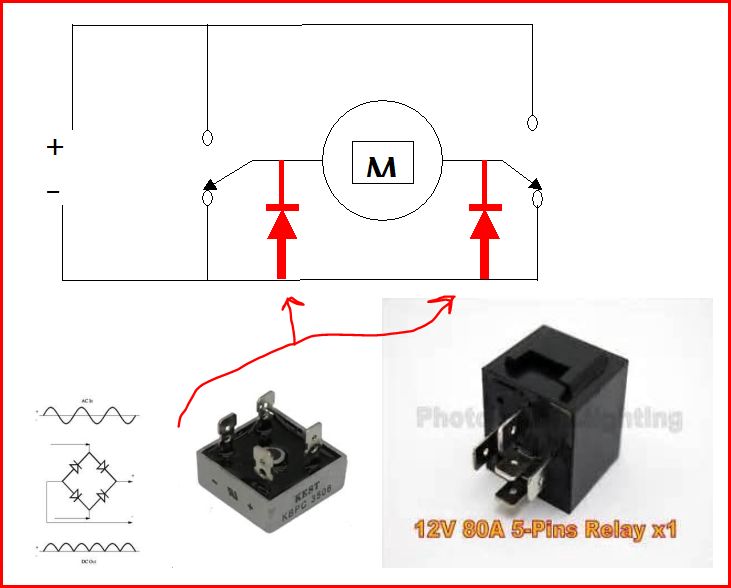Their schematic is confusing..
You will need two switches/relays.
Page three of the attachment figure B should help.
Their schematic is confusing..
You will need two switches/relays.
Page three of the attachment figure B should help.
Dave
Always wear safety glasses while programming.
Thanks for taking a look at it. I assumed it was an hbridge switching polarity with a secondary relay to cut power. The unit will draw upwards of 40 amps max, with a typical draw of around 20 amps at 12 vdc.
I've started looking for suitable relays, but have not found much other than automotive type relays. I have not found anything with a DPDT configuration to change the polarity with. I did find a few SPDT units but still looking. Any suggestions would be great!
Thanks, have a great Holidays
Replace the SPDT unit with two SPNO units.
Your logic should actuate none or only one of the SPNO units at any given time.
Both SPNO units ON is what you want to stay away from.
Nick
I always seem to end up up using automotive SPDT for things like this, mainly because they are easy to find and reliable.
Use two and have the coils wired together so they are both energized at the same time giving you a DPDT. Be sure to use a fuse just in case....
Dave
Always wear safety glasses while programming.
Hi,
I think you are making it more complicated than it really is....
If all you need is to be able to drive the motor in both directions as well as not drive it at all you need two SPDT relays (RE1 and RE2 in the below (very crude) schematic), each driven by an output on your PIC.
Here's the crude picture:
Both relays are, as usual, drawn in their "inactive" state, both sides of the motor is connected to the positive side of the supply and no current will flow thru the motor - it won't go anywhere. To run the motor in one direction activate one of the relays, to run it in the other activate the other relay. If you activate both relays both poles of the motor will be connected to the negative side of the supply and the motor will not run.
/Henrik.
yes, and a good ckt for spike reduction and inductive energy dampening for bi-directional ckt, using 1 full wave bridge.

Thanks for the explanations/examples, that is a huge help
I'm not completely clear on using the full wave bridge though, are you using just two of the four diodes?
Thanks again
Bookmarks